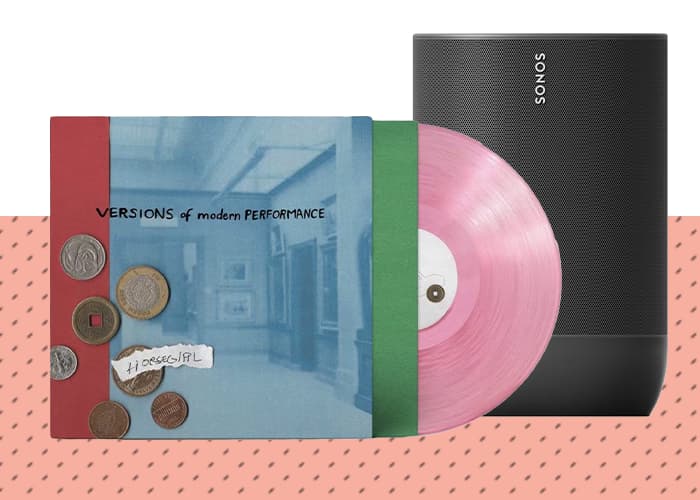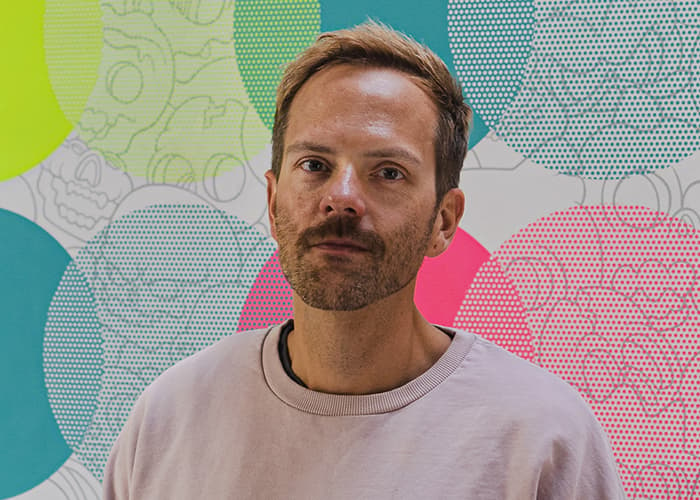Born and raised on Detroit’s east side, Tony Whlgn is forging a 21st-century, digital career founded on analog sensibilities. This artist and designer is Detroit, through and through. Listing off his Detroit Public School career, he traces his matriculation from Goodale Elementary to the Detroit School of Arts. His personal and cultural outlook has been shaped by the Motor City.
Tony describes his childhood as one of struggle. “It was always going to be a struggle,” he says. But instead of dwelling on the hardships, Tony looks back with pride. For Tony, his upbringing made him who he is. “My city humbled me by placing me in unexpected situations and forcing me to adapt to it.”
Whlgn-ism
Tony is the head of a loose affiliation of entrepreneurial artists known as the Whlgn (pronounced hooligan) Family. Echoing the freedom of the solo recording careers of the Wu-Tang Clan, each of the seven members functions as independent artists running their own businesses while forming under the Whlgn banner.
When asked about the unique spelling and meaning behind ‘”Whlgn” Tony smiles. “Whlgn is unique because it’s a word you have to make a meaning for,” he explains, “if you can’t pronounce it you learn how to pronounce it and it gives a new meaning to the word.”
 Remembering Firsts
Remembering Firsts
Tony Whlgn has a long memory. When asked about his first experiences with art, music, and culture, he reaches back, way back.
Tony fell in love with art and it’s infinite possibilities in kindergarten, during nap time. Instead of napping, Tony stayed awake to check out what the substitute teacher was doing. Luckily for Tony and the rest of us, the substitute teacher was an artist. Tony asked the substitute what he was drawing (a centaur), and he’s been an unrepentant artist ever since.
He connected with hip-hop early, too. Tony’s first true memory of hip-hop is Luniz’s seminal 1995 anthem “I Got 5 on It.” His mom loves this song. She would play it all the time when Tony was growing up. She played Luniz so much that she told Tony: “That’s probably the reason you smoke.”

Middle school and high school proved formative for Tony’s interest in sneakers and streetwear. The first shoe that sparked Tony’s sneakerhead passion was the adidas Top Ten. After he found out multiple iterations of the Top Ten existed, he wanted to collect them all. Tony laughs, “I collected Pokemon, so I wanted to collect sneakers too.” These days you’ll find Tony rocking Nike Footscapes or Nike ACG Moccasins.
When Tony went to high school, he and his friends got into streetwear. To search out distinct looks, they would shop Karmaloop or Burn Rubber, because Tony was “connected to the guys [at Burn Rubber].” Streetwear remains an important part of Tony’s identity because of the cultural history of streetwear. Tony explains that streetwear “means culture. Not obeying the rules. [People] started using copyrighted images and flipping them to reflect a personal idea by tapping into the memory bank of our culture.”
Making Art and History Work
He creates art by recognizing the fact that he reacts emotionally to the world around him and this manifests itself in everything he paints and designs. His sensitivity to his emotional life also opens him up to be more empathetic and understanding of the people around him. Tony searches to find the “balance in people” through his work. To do this, he “refers to the past” by finding creative models in people like James Baldwin and Picasso. Going even further back, Tony views the inventors, broadsides, and political climate of the 1600s and 1700s as a lode of inspiration.
Even as Tony follows his idiosyncratic artistic vision, he’s conscious of trying to make sure he can make a living as a creative. He acknowledges that “fine art is such a niche area to get to into, so you have to find ways to meet the art world, remain yourself, and not be a struggling artist.” Again, balance comes into play, because Tony never wants to “sell his art because he has to.” In Tony’s search to balance his art with his wallet, KAWS has become a source of inspiration because he admires “KAWS’ approach to commerce and fine art.”

Defining His Own Era
Tony demonstrates this personal and professional balance through his work with Ecko Clothing and Brooklyn-based hip-hop collective Pro Era. When Tony was 20, he decided he needed to step out of his comfort zone and cultivate new clients. He reached out to and connected with Joey Bada$$’s manager, Jonny Shipes.
Tony and Jonny linked up around the time Joey Bada$$ was named the creative director of Ecko Clothing and Jonny convinced Tony to move to New York and help with the Ecko brand rebuild. From there, Tony was adopted into the Pro Era family becoming the collective’s artistic director. It is through his work creating album covers for Joey, the Pro Era family, and Cinematic Music Group (CMG) that Tony has been able to create the art, and generate the income, needed to maintain his personal and professional balance.
Tony’s personal style is complementary to his creative process, his quest for balance, and sources of inspiration: form, functionality, and timelessness. Everything that Tony wears follows this sartorial dictum: “Everything on me has to have to a purpose,” he says, “from my pockets to shoes for comfort.”
He still cultivates a fashionable presence by searching out pieces that provide a classic look with durability. Stressing durability, Tony says “Carharrt will last,” thus making it a go-to brand. “Also, I paint a lot, so I had a couple of Polo shirts I messed up in the wash so they’re paint-shirts now. I paint in polo,” Tony says explaining how incorporates iconic pieces into his workwear.
 Detroit on Loop
Detroit on Loop
With everything going on in Tony’s life, it’s hard for him to always feel grounded. He admits to feeling stretched too thin and dealing with anxiety from time-to-time. It was this feeling, more than anything else, that convinced Tony to return to Detroit. As Tony describes it: “Detroit is love. Everybody that ever came here from out of town has experienced it even if they don’t get it [love] in their hometown.” So no matter who you are and where you roam, once you’ve experienced Detroit, it stays with you.
Embracing and being embraced by his peers and his city forms the core of Tony’s outlook on life and art. Even when he decamped for New York he took Detroit with him by “staying true to what it means to be a Detroiter, being yourself.” He goes big picture saying, “there’s a lot of misunderstanding but Detroit is the starting point of America, so you need to stay true to who you are. Detroiters have a lot of individuality, a lot of uniqueness representing the rest of America.” He follows this unique perspective on the city he loves saying, “I keep the city’s language in dialogue at all times.”
Without Detroit as a literal and figurative cultural and historical touchstone, there would be no Tony Whlgn.
For him, success is measured by the level of happiness of the people around him, which inevitably means Detroit. “When the people around me are happy, I’m happy,” he continues, “so if the people around me are happy, less anxiety.” Tony considers success and his relationship to the city saying, “people should know that: fuck, I never stopped being myself. A lot of things I struggle with, but I am myself. I open myself up to new people.”
All of this represents the elusive balance Tony searches for in his art, in his life, and in Detroit.

























